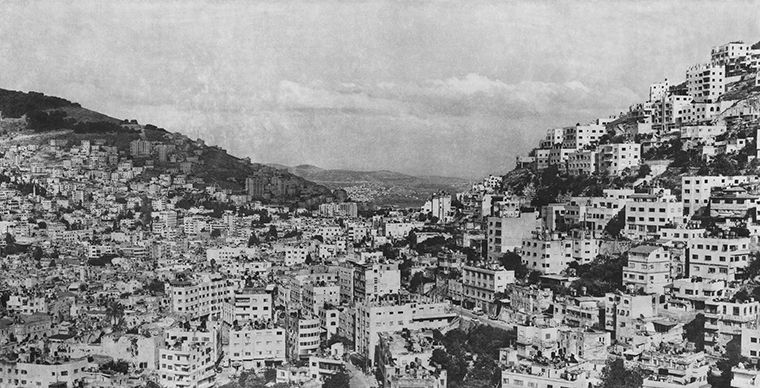Jungjin Lee’s ‘Unnamed Road’ takes viewers to Israel
Unnamed Road
March 16, 2015
“Unnamed Road,” Korean photographer Jungjin Lee’s photo series focusing on the contested lands of Israel and the West Bank, “Unnamed Road,” is now on display at the Andrew Bae Gallery, 300 W. Superior St., and runs through April 18.
The show is a collection of Lee’s photos taken while she participated in a larger project called “This Place” in Israel that was initiated by photographer Frédéric Brenner. “This Place” was based on the idea of viewing Israel and the West Bank from the vantage points of 12 international photographers, and took place from 2009–2012. This was the first time she had worked on a project like “This Place,” and sthe first time she worked in a locale she did not choose herself.
The majority of Lee’s photos feature landscapes of the lands in Israel, but she said her photos are more about conveying the feelings she experienced while visiting the country rather than simply capturing an image of the land.
“My pictures don’t exactly tell you information about Israel,” Lee said. “It’s more how I see Israel. This is a stipulation of my own mind. I’m more interested in invisible feelings—more of what I felt in Israel than what I saw.”
Iymen Chehade, an adjunct professor in Columbia’s Humanities, History & Social Sciences Department, teaches a class on the more than 60-year-old Israeli-Palestinian conflict. Chehade said Lee’s photography is beautiful, but like other depictions by artists and the media, does not accurately portray the conflict in Israel.
“The photography is beautiful, but at the same time it’s not really showing the essence and the reality of the situation there,” Chehade said. “In order to highlight what’s happening in the country, you really need to show that part as well, because without it, you’re not really giving a truthful and a real account of what’s happening and what exists on the ground there.”
Lee said she does not incorporate politics in her photos, but the conflict is present in the country and takes shape in many ways.
“I’m not interested in art involved with politics generally with my work, but Israel is a small country [and] when you’re there, the conflict is everywhere,” Lee said. “The country is divided and when you encounter the people, everybody seems to have their own mask and never share with others. There’s so many layers in this society. The land has a lot of layers. I could not avoid the conflict while in Israel. I could not avoid showing my emotional feeling of this complexity.”
Andrew Bae, director of his self-titled gallery, has represented Lee for 12 years. Bae said Lee is the only photographer he represents, but he does so because her work is different from other photographers.
“Many art critics describe her work as poetry,” Bae said. “There’s a lot of emotional connotations in there. It’s not like a landscape, and that’s the distinction of her photos. The effect works so beautifully with her photography.”
The process Lee uses to develop her photographs sets her apart from other photographers because she prints her images on handmade rice paper and applies silver nitrate—the chemical compound needed for paper to capture an image—by hand. Bae said Lee’s prints are never the same twice, even if the prints are of the same image.
“She prints on the rice paper, which means technically speaking she is like a hundred years behind and she has to apply the silver nitrate [to make it photo paper],” Bae said. “The result is very unpredictable. She is not in control in a large part with how [the photo] will turn out, so each work will be very different, even though it’s the same image. Each one is an original.”
Bae said Lee also differs from any other photographer because of the time-consuming and intricately considerate process in which she takes her photographs.
“She is very different from other photographers in that she takes very few pictures—she does not take 1,500 pictures and pick the best one out of it,“ Bae said. “Until she is ready to push the shutter, she takes enormous time, sometimes days, just standing there. She has to be able to feel and see what she wants to see in her photos. It’s not just capturing the object and taking a bunch of pictures. Her mental process is a lot different.”








